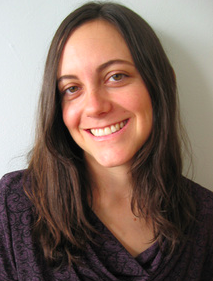Brands
Democracy Now! Aims to Grow Support, Viewers with Social Media
This post is part of the Social Media Editor Series, featuring interviews with social media editors from news organizations about what they do and where they see social media in journalism going.
 Jessica Lee needs to make one-way broadcasts a two-way street. That means encouraging social media on platforms that are not especially web-friendly, namely Democracy Now!‘s television and radio news hour.
Jessica Lee needs to make one-way broadcasts a two-way street. That means encouraging social media on platforms that are not especially web-friendly, namely Democracy Now!‘s television and radio news hour.
Unlike news stations and publications, Democracy Now! broadcasts on borrowed time and platforms, giving it little in the way of pro bono advertising. To heighten the matter, the independent publication relies on viewer contributions to exist.
“Because we’re a nonprofit, we must look at how we are transitioning viewers into actual money, whereas other news outlets aren’t asking for support specifically,” Social Media and Online Outreach Coordinator Jessica Lee said of Democracy Now!, which airs on TV and radio stations across the world, as well as online and on podcasts. “The audience is going to vote with their dollars for programing that’s important.”
Specialized content builds loyalty, followers
Fortunately for Democracy Now!, Lee says it has both unique content and viewers.
“People are really thirsty for news that’s different,” Lee, a former independent media journalist and teacher, said. “We’re not network news; we’re not flashy.”
Rather Democracy Now! prides itself on its rare perspectives, given through long interviews. “Our readers sift through our content and are really interested in thinking about it,” Lee said.” We have a smart audience that’s more globally aware.”
They also respond well to social media.
When Lee, 31, became Democracy Now!’s first social media coordinator in 2010, all of the program’s sharing platforms were automated, and the show had 80,000 Facebook fans.
 “Once we started doing daily updates and interacting with our readers, our numbers went up greatly,” said Lee. The program now has 282,000 Facebook and 177,000 Twitter followers. In the same time the program moved from 700 to more than 1,000 stations.
“Once we started doing daily updates and interacting with our readers, our numbers went up greatly,” said Lee. The program now has 282,000 Facebook and 177,000 Twitter followers. In the same time the program moved from 700 to more than 1,000 stations.
To continue the growth through social media, Lee must leverage Democracy Now!’s one-hour broadcasts into easily consumable bites.
“Journalists usually prepare packages of content: an article, pull quote, graphic—social media is doing the opposite now,” Lee said. “You still have to do a traditional story and multimedia, but then you have to know how to take it apart and make sure it makes sense in simple components.”
This has repercussions for news creation and dissemination.
“Social media is now a production question,” Lee said. “In the early creation of the story itself, we consider how we’re going to put it on social media.”
 Despite this, the content still has to be repackaged: shortening headlines to 100 characters to fit Facebook, using SEO and putting keywords up at the top of the attendant text.
Despite this, the content still has to be repackaged: shortening headlines to 100 characters to fit Facebook, using SEO and putting keywords up at the top of the attendant text.
“We sometimes write very straight news headlines, which are accurate, but are not going to catch people’s eye on Facebook or Reddit or Twitter,” Lee said. “If you get a story voted at very top of Reddit, it brings in a ton of traffic to your website, no joke.”
Hopefully, by extension, that traffic creates a more committed and generous viewership.
Lee said she is also diligent about tagging Facebook groups in articles that might interest them and working with social media editors from stations on which Democracy Now! airs to mutually promote each other.
Tending to the relationships that sustain the station
For Lee, maintaining a relationship with viewers is not just about getting them Democracy Now!’s content, but making sure the content suits them. Democracy Now! frequently solicits tips, guest suggestions and ideas.
Going through the comments and conversations on social media, Lee can see when there’s an outlier of interest or demand, and inform the producers accordingly.
But for such a publication that depends so heavily on its viewership, Lee says there’s a long way to go.
“I would say we’re not there completely yet because we don’t have a full-time online editor and we just sort of produce our own content based on our one-hour daily show,” she said. “If we want to keep people on the page day and night throughout world, we need to compete with the breaking news world, and have a specified person doing online curation and updating things we covered on the show.”
Get better at your job right now.
Read our monthly newsletter to master content marketing. It’s made for marketers, creators, and everyone in between.




